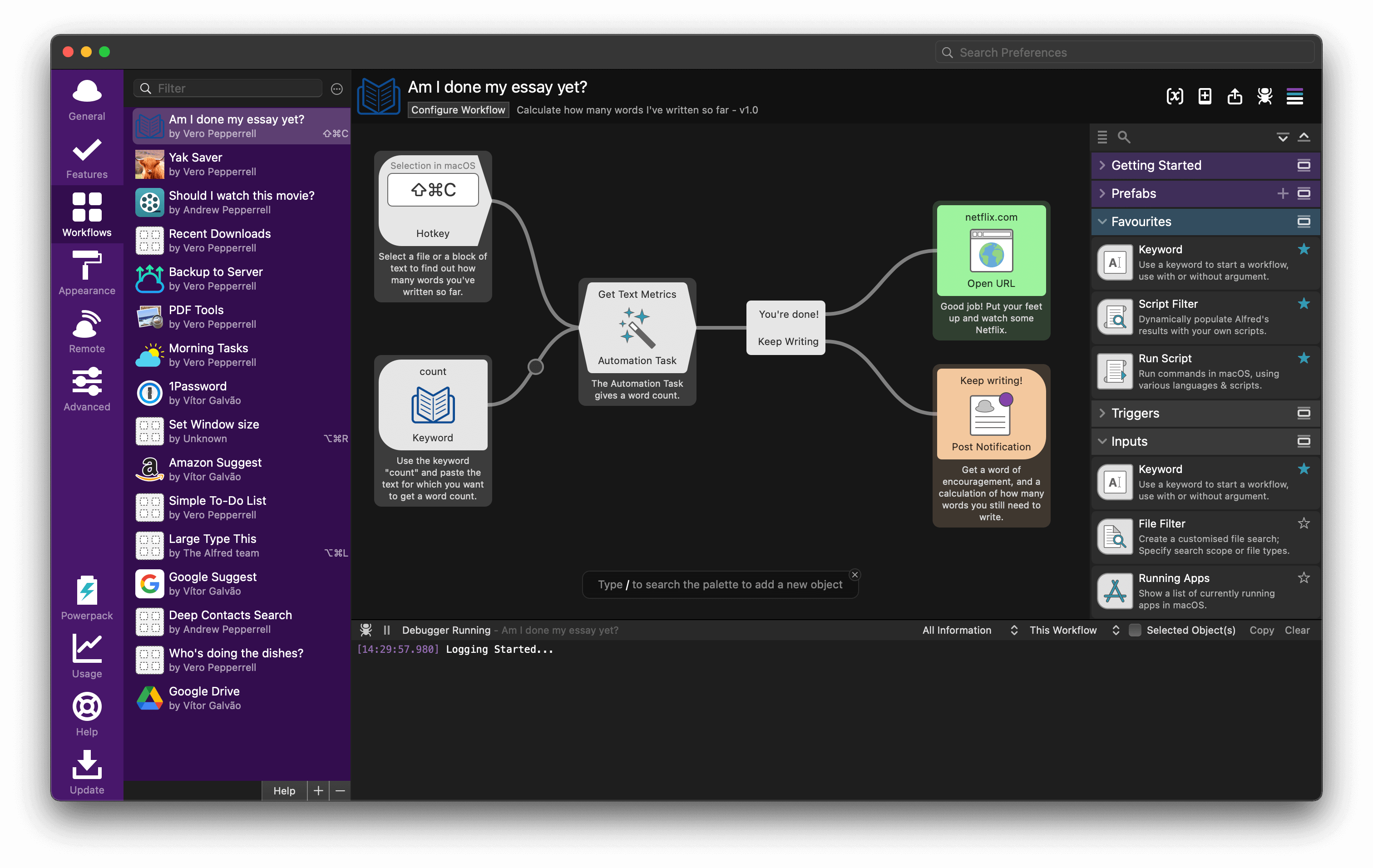

Some have obscure keyboard shortcuts or feel slow. I tried many window management apps in the past and didn’t like most of them. The rest of this blog post is focused on apps and protips: Window Management: Rectangle Pro However, after this (and a restart) my new Mac is usually ready to go with the same setup as my previous one! Right now, Syncalicious keeps preferences on a per-machine basis and you’ll manually have to locate your synced preferences in your Dropbox folder and copy them to ~/Library/Preferences. However, keep in mind that Syncalicious is still alpha software, and Mackup might be a better fit for you. This is a great way to avoid having to keep two computers side-by-side and going through the setting screen of each app to mirror your setup exactly the way you like it. With Syncalicious you can backup the preferences for any of your apps.
#Alfred for mac m1 install#
If you have been copying my Homebrew install script, you’ll now have Syncalicious installed already. You’ll have all the subsequent apps installed on your Mac after running the above script.
#Alfred for mac m1 mac os#
Once done, open each app one by one to tell mac OS that you are happy to run dangerous Internet software, and log in to the ones that require logging in. Here is an example Brewfile and a homebrew install script: On your existing Mac, run brew bundle dump and then copy the resulting Brewfile to your new Mac. The next step is to install Homebrew with all binaries, apps and fonts 2 to get your Mac ready for development. I like this method as it keeps your dotfiles repository organized and easy to manage, yet it makes all your configuration available in the right places. bootstrap script from Zach Holman’s dotfiles repo. Check out all of these examples, or clone a copy of my dotfiles repo cpojer/dotfiles. If you don’t have your own dotfiles repo yet, I highly recommend making one to backup your bash, fish shell, git, and other configuration.

Once you are ready to use git locally, clone your dotfiles repository into ~/.home via git clone.
#Alfred for mac m1 how to#
Most likely you’ll find yourself reading the Connecting to GitHub with SSH guide for the 100th time because you just cannot remember how to set up a new SSH key otherwise. The first step is to log in to GitHub and set up a new SSH key via GitHub → Settings → SSH and GPG Keys → New SSH key. To get started setting up a new Mac, open your Terminal and run xcode-select -install and sudo xcodebuild -license in your terminal. It also forces me to make my setup portable which prevents the potential for data loss. I prefer setting up new devices from scratch as it keeps my computers clean. While there are various methods to automatically migrate data like Apple’s Migration Assistant, they are usually imperfect, require a lot of manual work, and often cannot be used on corporate Macs. Over the years I used many different personal and work Macs. I just received a new Starlight M2 MacBook Air and I wanted to share scripts, apps, protips, and what hasn’t worked for me in the past when setting up a new Mac, fast.


 0 kommentar(er)
0 kommentar(er)
